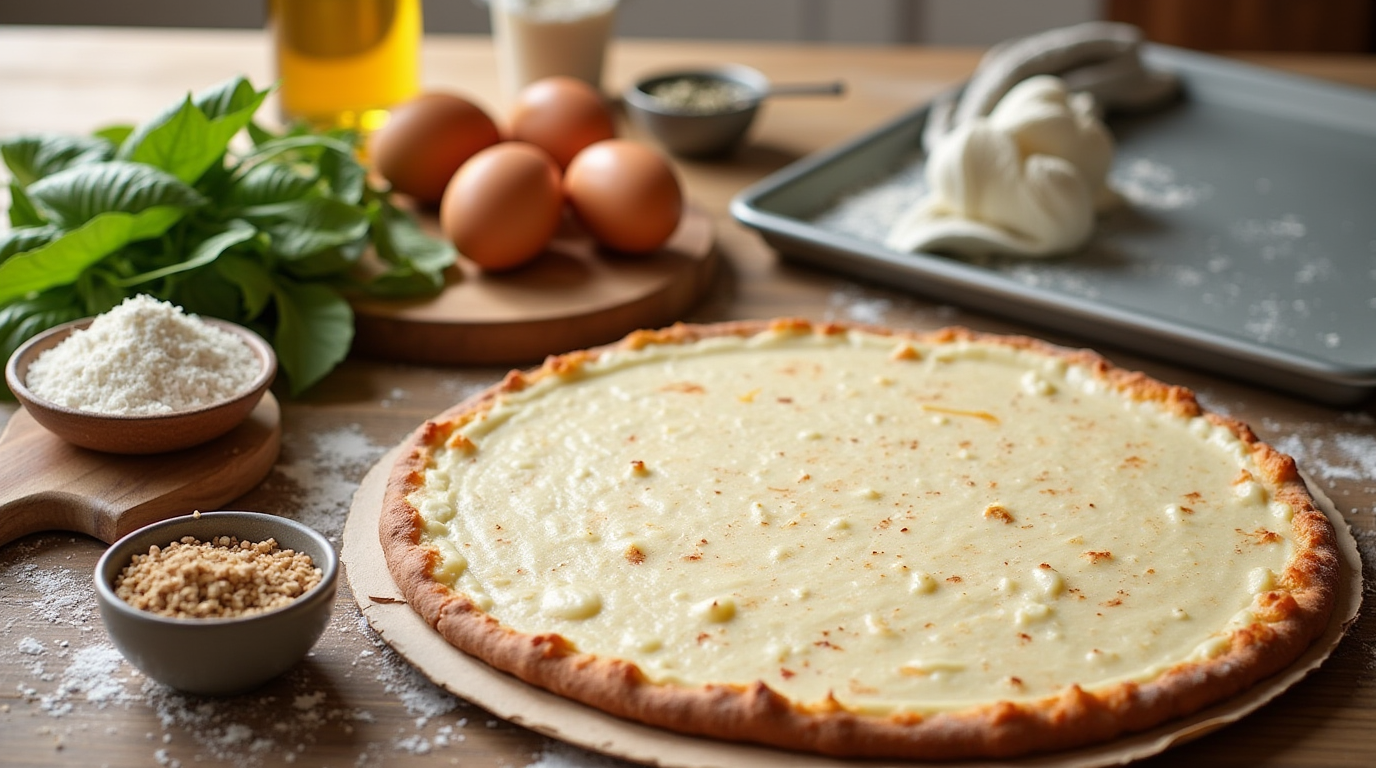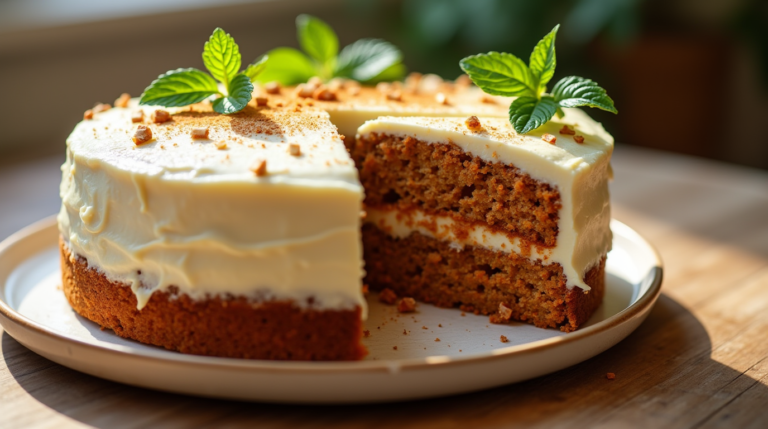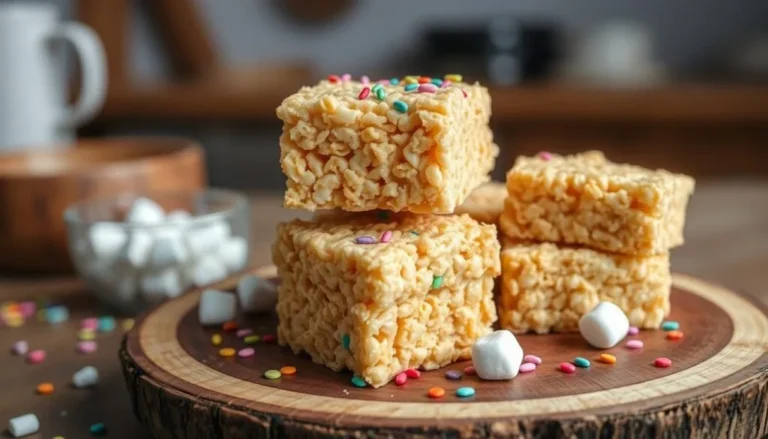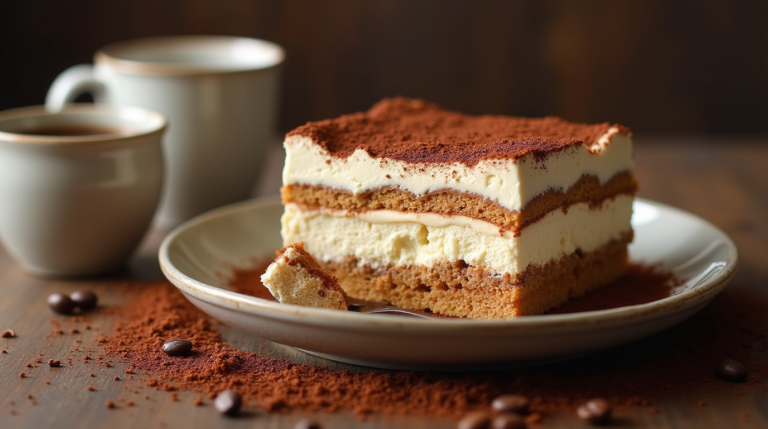Nutrition Facts and Calories in Gluten-Free Pizza Crust: An Explanation
Finding the right nutrition can seem like a big challenge. For those looking at gluten-free options, knowing the calories in gluten-free pizza is key. My journey started when a friend had to deal with gluten sensitivities. It made me realize how important knowing what we eat is.
Gluten-free pizza nutrition facts show a world of new ingredients and healthy choices. If you have celiac disease, gluten intolerance, or just want healthier meals, this guide is for you. It will help you understand the nutritional side of gluten-free pizza crusts.
Thanks to modern food tech, gluten-free eating is now a fun adventure. You’ll see how different ingredients can make pizza that’s both tasty and healthy. It’s all about finding the right balance without losing flavor.
Table of Contents
Understanding Gluten-Free Pizza Crust Basics
Gluten-free pizza crusts have changed the game for those with dietary needs. They’re perfect for those with celiac disease or just looking for healthier options. Learning about gluten-free pizza crust recipes opens up a world of tasty possibilities.
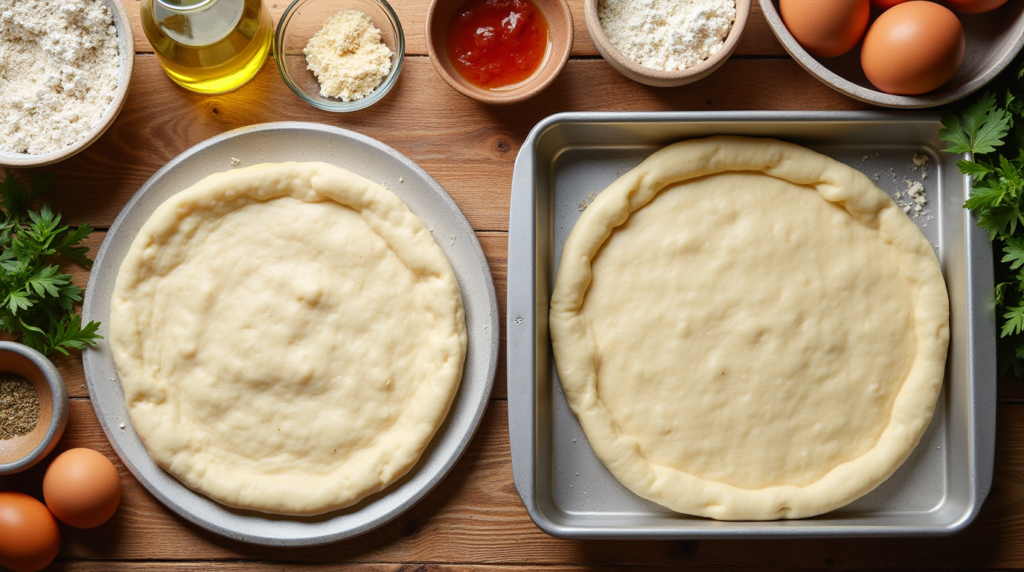
Common Ingredients in Gluten-Free Crusts
Making a gluten-free pizza crust is all about creative ingredients. You’ll often find:
- Rice flour
- Almond flour
- Tapioca starch
- Cornstarch
- Xanthan gum (for binding)
Benefits of Gluten-Free Pizza Options
“Gluten-free doesn’t mean flavor-free – it means a healthier, more inclusive dining experience.”
Gluten-free pizza crusts offer more than just a dietary solution. They bring:
- Improved digestibility
- Lower inflammatory responses
- Nutrient-dense ingredients
- Suitability for various diets
How Gluten-Free Crusts Differ from Traditional Pizza
Gluten-free crusts need special preparation. They might feel different, but with the right mix, they can match traditional crusts in taste.
| Characteristic | Traditional Crust | Gluten-Free Crust |
|---|---|---|
| Primary Ingredient | Wheat Flour | Rice/Almond Flour |
| Gluten Content | High | None |
| Texture | Elastic | Slightly Denser |
| Nutritional Profile | Standard | Often More Nutrient-Dense |
Essential Nutritional Components of Gluten-Free Pizza Crust
Looking into gluten free pizza nutrition facts shows a detailed nutritional profile. It’s different from regular pizza crusts. Let’s dive into what makes up gluten-free pizza.
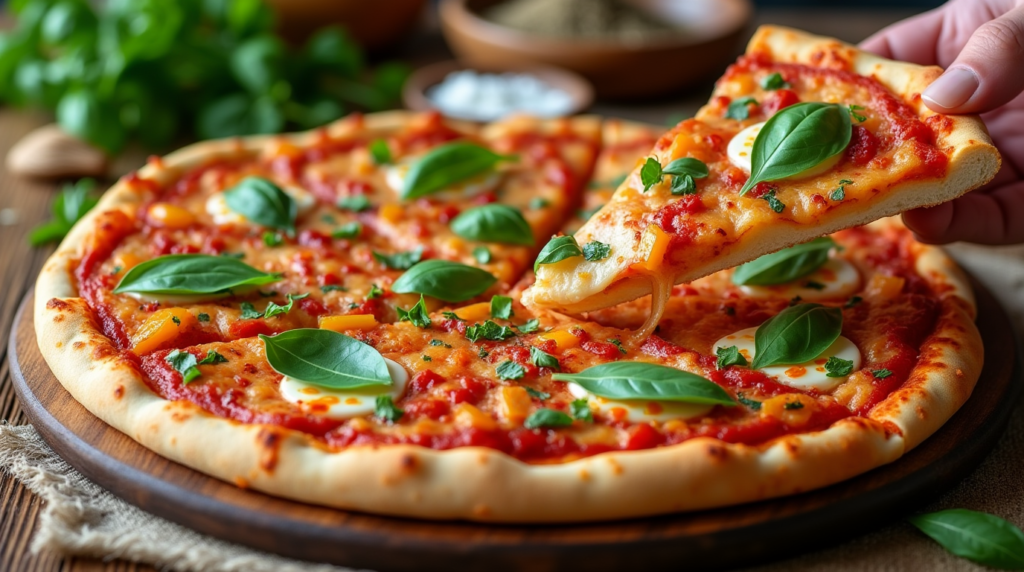
Gluten-free pizza crusts use many different flours to be nutritious. These include:
- Almond flour
- Cauliflower
- Chickpea flour
- Rice flour
- Quinoa flour
Each flour adds special nutrients to the crust. Almond flour, for example, has healthy fats and protein. Quinoa flour is a complete protein with all essential amino acids.
“Nutrition is not about being perfect. It’s about eating food that makes you feel great.” – Kevin Gianni
Knowing about gluten free pizza nutrition facts helps you choose better. Let’s look at the main nutrients:
| Nutrient | Average Content | Nutritional Benefit |
|---|---|---|
| Protein | 3-7g per slice | Muscle repair and growth |
| Carbohydrates | 15-25g per slice | Energy production |
| Fiber | 2-4g per slice | Digestive health |
| Healthy Fats | 5-10g per slice | Nutrient absorption |
These nutrients show that gluten-free pizza can be a healthy meal. It’s all about using the right ingredients.
Calories in Gluten Free Pizza Recipe: A Complete Breakdown
Knowing the calories in gluten-free pizza helps you make better food choices. It’s important to look at the calorie count and what’s in your pizza.
Serving Size Considerations
Gluten-free pizza servings are usually 1/4 to 1/2 of a regular pizza. How many calories you eat depends on how much you have. A slice of homemade gluten-free pizza has about 200-300 calories.
Caloric Content by Ingredient
- Gluten-free flour blend: 120-150 calories per 1/4 cup
- Olive oil: 120 calories per tablespoon
- Cheese: 100-110 calories per ounce
- Tomato sauce: 15-30 calories per serving
Daily Value Percentages
When you’re counting calories in your gluten-free pizza, think about your daily needs. A slice of gluten-free pizza is about 10-15% of a 2,000-calorie diet.
“Mindful portion control is key to enjoying gluten-free pizza while maintaining a balanced diet.” – Nutrition Expert
Pro tip: Pick ingredients wisely to keep calories low and nutrients high in your gluten-free pizza.
Carbohydrate Content and Glycemic Impact
It’s important to know the carbs in gluten free pizza to manage your diet. Gluten-free crusts have different carbs than traditional wheat crusts. This can affect your blood sugar.
Carbs in gluten-free crusts come from:
- Almond flour
- Rice flour
- Corn-based starches
- Potato flour
- Quinoa-based alternatives
Each flour type has its own effect on blood sugar. Rice flour and corn-based starches can cause blood sugar to rise quickly. But almond and quinoa crusts are better for stable blood sugar.
“Not all carbohydrates are created equal – especially in gluten-free pizza crusts.” – Nutritional Research Institute
If you’re watching your blood sugar, choose crusts with less impact. Opt for pizzas with complex carbs and more fiber to keep your sugar stable.
There are ways to control carbs in gluten-free pizza. Eating your pizza with protein and veggies can help keep your blood sugar in check.
Protein Sources in Gluten-Free Pizza Crust
Making a tasty gluten free pizza crust needs careful thought about protein sources. Protein is key to making a healthy and filling crust, unlike traditional wheat ones.
Alternative Protein-Rich Ingredients
Exploring gluten free pizza crust recipes, you’ll find many protein-rich ingredients. These can boost your pizza’s nutritional value:
- Almond flour: Provides 6 grams of protein per 1/4 cup
- Chickpea flour: Offers 5 grams of protein per 1/4 cup
- Quinoa flour: Delivers 4 grams of protein per 1/4 cup
- Chia seeds: Adds 2 grams of protein per tablespoon
Amino Acid Profile Comparison
Not all proteins are the same. Each ingredient has its own amino acid mix for your gluten free pizza crust.
| Ingredient | Complete Protein | Essential Amino Acids |
|---|---|---|
| Quinoa Flour | Yes | All 9 essential amino acids |
| Almond Flour | No | Limited amino acid range |
| Chickpea Flour | Partial | 6 essential amino acids |
Protein Quality Assessment
When picking protein for your gluten free pizza crust, look at the protein digestibility-corrected amino acid score (PDCAAS). This score shows the protein’s value and nutritional effect.
“The right protein source can transform a simple pizza crust into a nutritional powerhouse.” – Nutrition Expert
Choosing the right protein ingredients can make your gluten free pizza crust both delicious and nutritious.
Fat Content and Healthy Oil Alternatives
It’s important to know the fat content in gluten free pizza nutrition facts. Different oils can change the taste, texture, and nutrition of your gluten-free pizza crust.
When looking for fat options for gluten-free pizza, consider these alternatives:
- Olive oil: Rich in monounsaturated fats and antioxidants
- Avocado oil: High smoke point and heart-healthy nutrients
- Coconut oil: Adds unique flavor and potential metabolic benefits
- Grapeseed oil: Light taste with vitamin E content
“Not all fats are created equal – choosing the right oil can transform your gluten-free pizza experience.”
Nutritionists say to pick oils with good fatty acid profiles. Extra virgin olive oil is an excellent option. It has about 14 grams of fat per tablespoon, mostly good monounsaturated fats.
Your gluten free pizza nutrition facts should show the quality of fats used. Choose unrefined, cold-pressed oils. They keep more natural nutrients. Avoid processed oils that can have harmful trans fats.
By picking smart oil alternatives, you can make a tasty gluten-free pizza crust. It will support your nutritional goals and taste great.
Micronutrients and Mineral Content Analysis
It’s important to know the micronutrients in gluten-free pizza for a balanced diet. Gluten-free pizza nutrition facts show a mix of vitamins and minerals that help your health.
Essential Vitamins in Gluten-Free Crusts
Gluten-free pizza crusts have many important vitamins. These vitamins help meet your daily nutritional needs. They include:
- Vitamin B complex (B1, B2, B3, B6, B12)
- Vitamin E
- Folate
- Vitamin D (through fortification)
Mineral Composition Details
Gluten-free pizza crusts have a lot of minerals. Nutritional analysis shows several key minerals:
| Mineral | Typical Amount per Serving | Nutritional Benefit |
|---|---|---|
| Iron | 2-3 mg | Supports blood health |
| Calcium | 20-40 mg | Strengthens bones |
| Magnesium | 15-25 mg | Supports muscle function |
| Zinc | 1-2 mg | Boosts immune system |
Fortification Benefits
Manufacturers are working to make gluten-free pizza crusts healthier. Fortification strategies add essential nutrients. This helps fill gaps in gluten-free diets.
“Nutrition is about making smart choices that support your overall health and wellness.” – Registered Dietitian
When choosing gluten-free pizza, check the nutrition label. Look for added vitamins and minerals. This way, you get more nutrition while enjoying your meal.
Dietary Fiber and Digestive Health Benefits
Discovering a gluten free pizza crust recipe that supports digestive health can change how you eat. Fiber is key for a healthy gut, especially for those with gluten sensitivities.
Your digestive system needs nutrient-rich foods. Gluten-free pizza crusts can be full of dietary fiber. This is thanks to ingredients like:
- Almond flour
- Coconut flour
- Psyllium husk
- Chia seeds
An easy recipe with these ingredients offers big digestive benefits. Fiber helps keep bowel movements regular, supports good gut bacteria, and boosts overall digestive health.
“Nutrition isn’t just about calories—it’s about supporting your body’s natural processes.” – Registered Dietitian
Different fibers offer unique benefits for your digestive system. Let’s look at what they do:
| Fiber Type | Digestive Benefit | Gluten-Free Source |
|---|---|---|
| Soluble Fiber | Slows digestion, stabilizes blood sugar | Chia seeds |
| Insoluble Fiber | Promotes regular bowel movements | Almond flour |
| Prebiotic Fiber | Supports healthy gut bacteria | Psyllium husk |
Creating a fiber-rich gluten free pizza crust recipe doesn’t mean sacrificing taste. With the right ingredients, you can enjoy a delicious meal that supports your digestive health.
Making Healthier Gluten-Free Pizza Choices
Finding the right gluten-free pizza can be tough, especially if you want to eat healthy. Knowing how to pick the right options can make a big difference.
Choosing a better gluten-free pizza means making smart choices. You need to pay attention to what’s in your food and how it affects your health.
Reading Nutrition Labels Like a Pro
When you look at nutrition labels, focus on a few important things:
- Total calories per serving
- Protein content
- Sodium levels
- Fiber amount
Smart Ingredient Substitutions
Make your gluten-free pizza healthier with smart swaps:
| Original Ingredient | Healthier Substitute | Nutritional Benefit |
|---|---|---|
| White rice flour | Almond flour | Higher protein, lower carbs |
| Processed cheese | Part-skim mozzarella | Reduced fat, same flavor |
| Pepperoni | Grilled chicken | Lean protein source |
Remember, small changes can significantly impact your overall nutrition without sacrificing taste.
“Eating healthy is a form of self-respect” – Unknown
By using these tips, you can make tasty gluten-free pizzas that are good for you. You’ll meet your health goals and still enjoy your food.
Conclusion
Knowing the calories in gluten-free pizza recipes is key for smart eating. You’ve learned that gluten-free pizzas can be tasty and healthy if chosen wisely.
People who know their stuff about gluten-free pizza crusts see they vary in nutrition. By looking at ingredients, knowing serving sizes, and picking top-quality options, you can enjoy pizza that fits your diet. It doesn’t have to mean giving up on taste or health goals.
Understanding the details about nutrients, proteins, and calories helps you make better choices. Whether you make your own crust or buy one, you can pick gluten-free pizzas that match your diet and health goals.
Gluten-free pizza can be a great part of a healthy diet. With the right choices and knowledge of its nutritional value, it can become a meal that’s both delicious and good for you.
FAQ
How many calories are typically in a gluten-free pizza crust?
A gluten-free pizza crust usually has 150-250 calories per serving. The exact number depends on the ingredients used. For example, almond flour and coconut flour crusts are often lower in calories than those made with rice flour.
Are gluten-free pizza crusts nutritionally comparable to traditional crusts?
Gluten-free pizza crusts can have different nutritional values than traditional wheat crusts. They might have less protein but can be fortified with nutrients like chickpea or quinoa flour. This makes them a healthier option for some people.
What are the best gluten-free flour options for making pizza crust?
Great options for gluten-free pizza crusts include almond flour, cauliflower flour, chickpea flour, rice flour, and cassava flour. Each offers unique benefits. Almond flour adds protein and healthy fats, while cauliflower flour is low in carbs.
How can I make a low-calorie gluten-free pizza crust?
To make a low-calorie gluten-free crust, use cauliflower, zucchini, or almond flour. Use egg whites for binding and vegetable-based flours to reduce calories. These choices help keep the crust tasty and low in calories.
Do gluten-free pizza crusts have any nutritional advantages?
Gluten-free pizza crusts are great for those with celiac disease or gluten sensitivity. They can also offer more nutrients like protein and fiber. Some may even be less inflammatory for certain people.
How do I ensure my gluten-free pizza crust is nutritionally balanced?
To make a balanced gluten-free crust, mix different flours for a wide range of nutrients. Add seeds or nuts for extra protein and healthy fats. Ground flaxseed adds fiber, and fortified flour blends can include vitamins and minerals.
What should I look for when reading nutrition labels for gluten-free pizza crusts?
When checking labels, look at calories, protein, fiber, and sugars. Choose crusts with minimal processed ingredients and higher protein. Also, consider the serving size and compare brands to find the best option.
Can gluten-free pizza crusts be part of a healthy diet?
Yes, gluten-free pizza crusts can be healthy if eaten in moderation. Choose whole-food based crusts and top with vegetables. Be mindful of portion sizes to keep your diet balanced.

